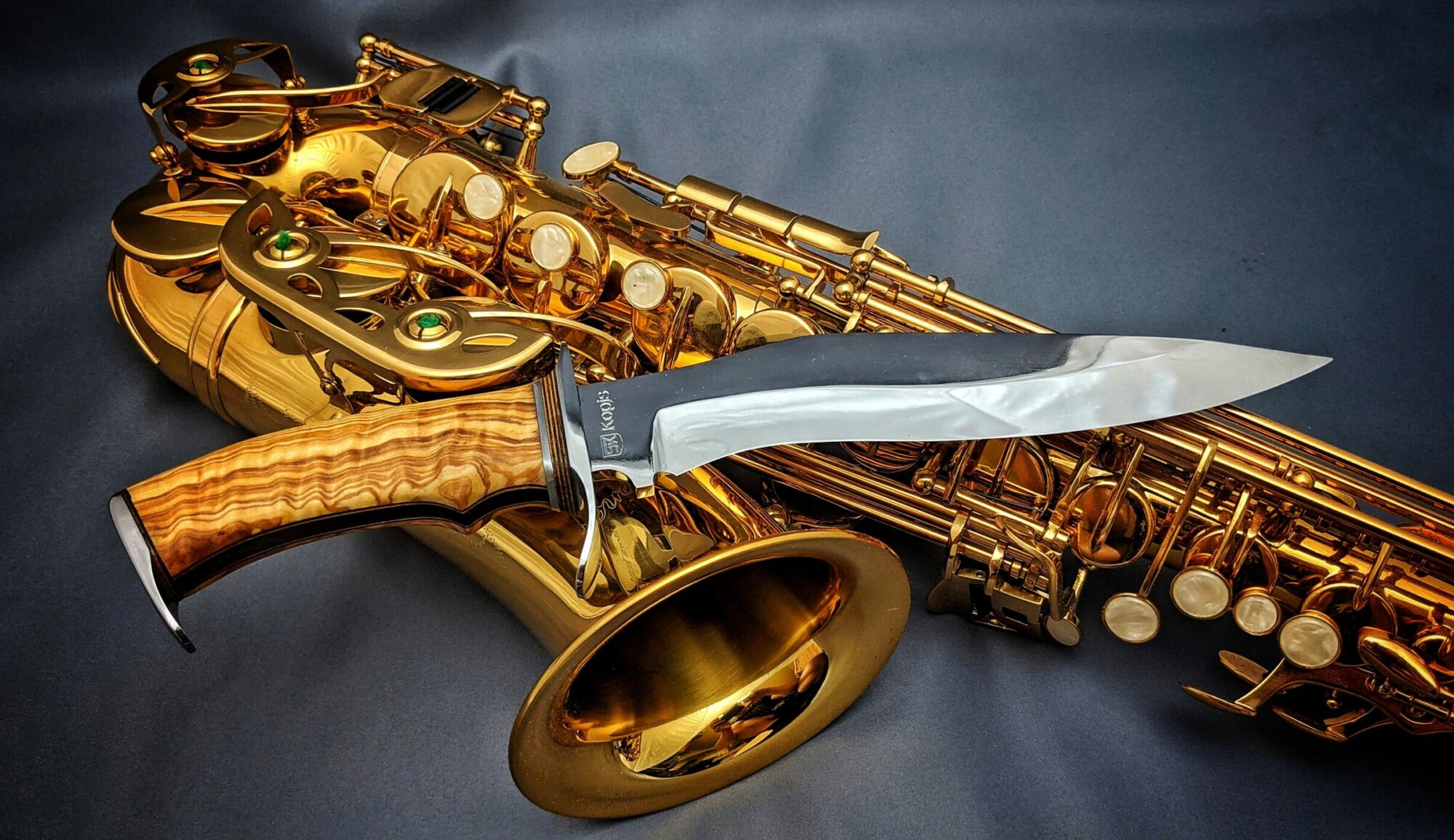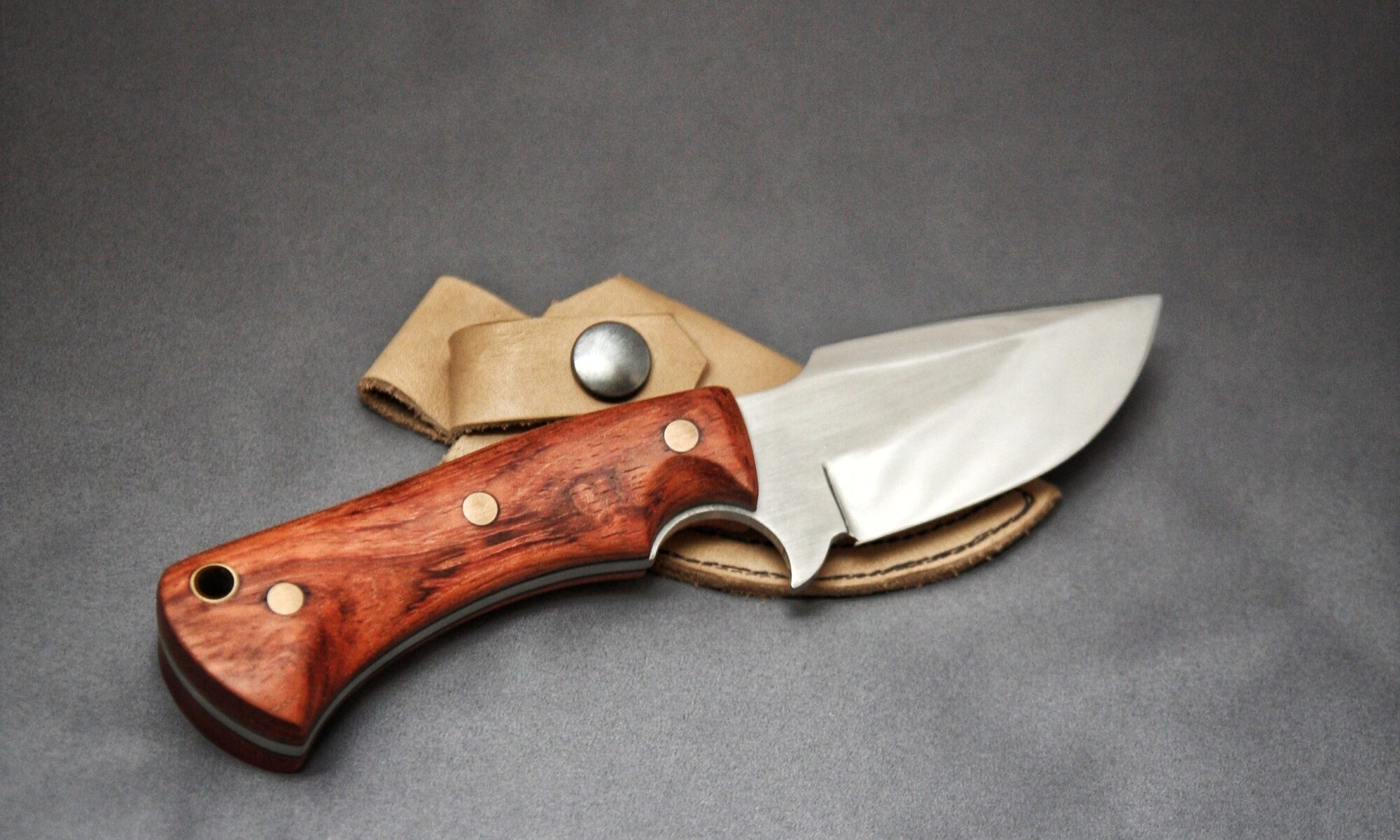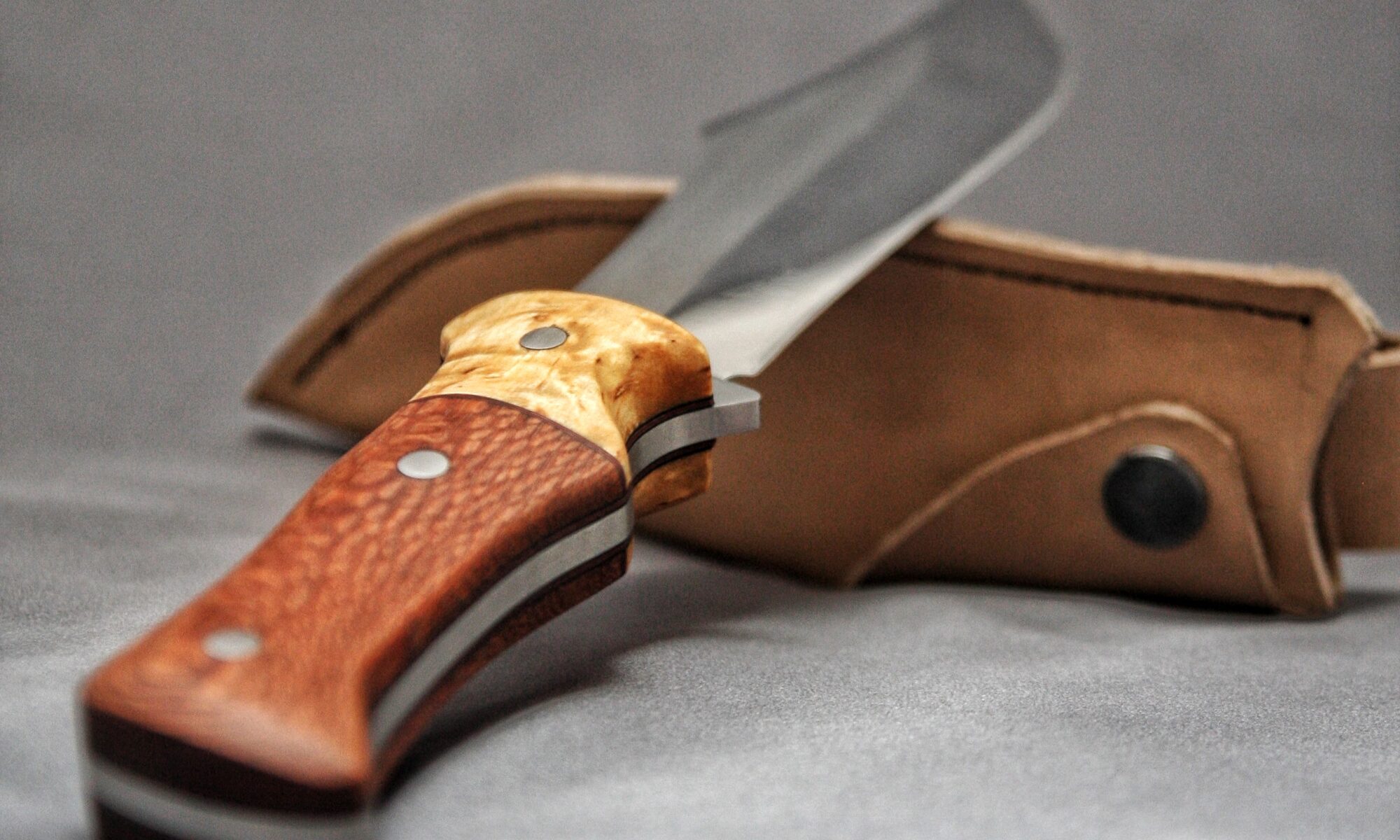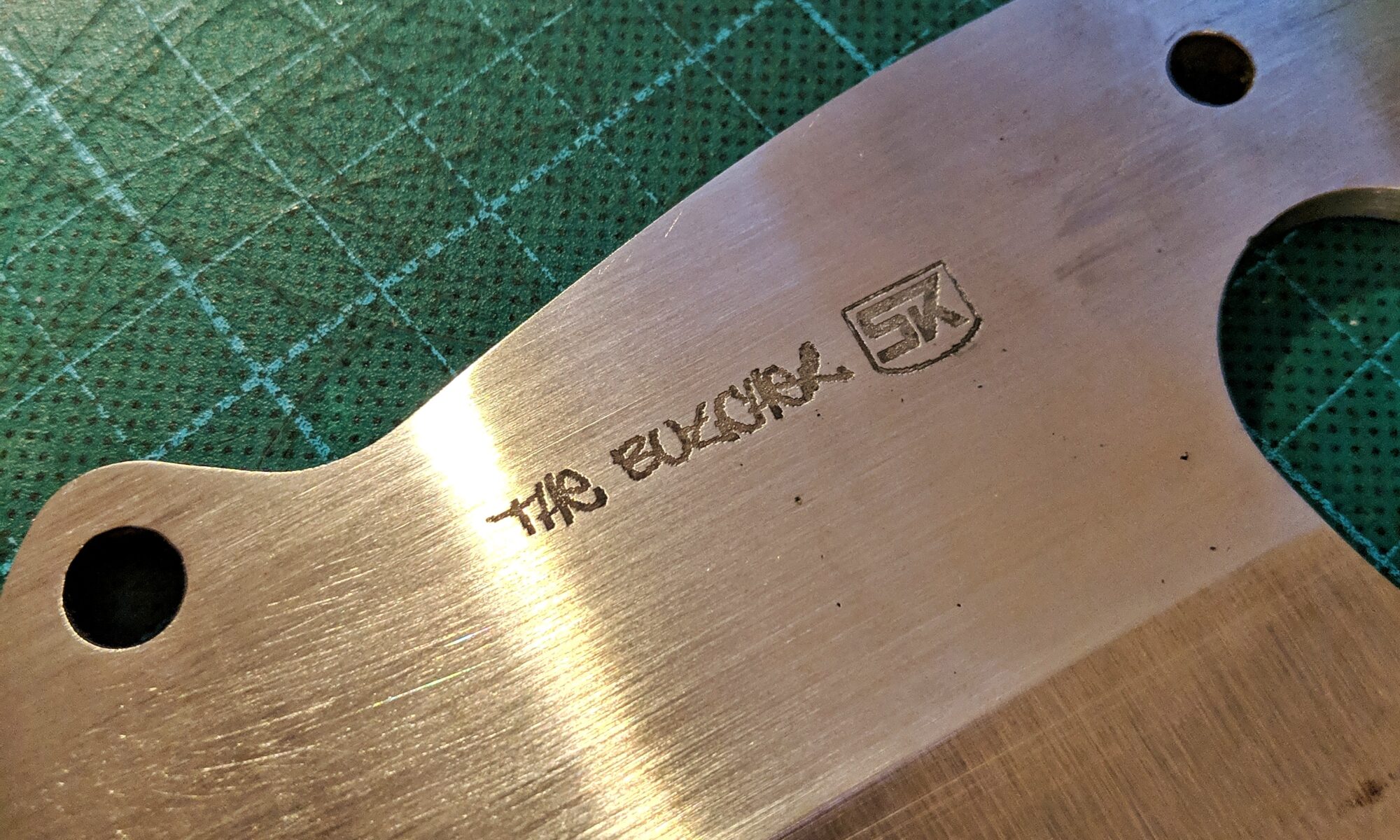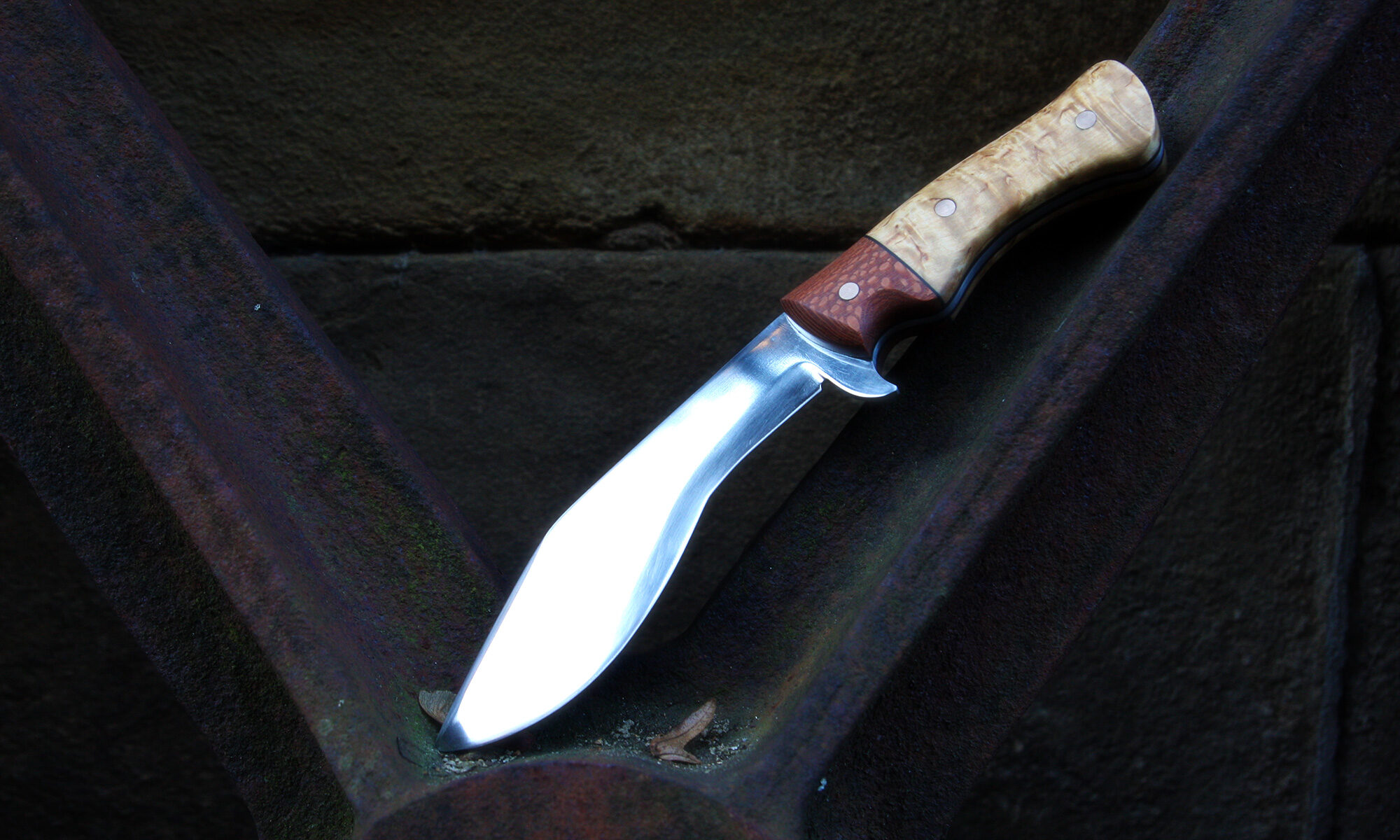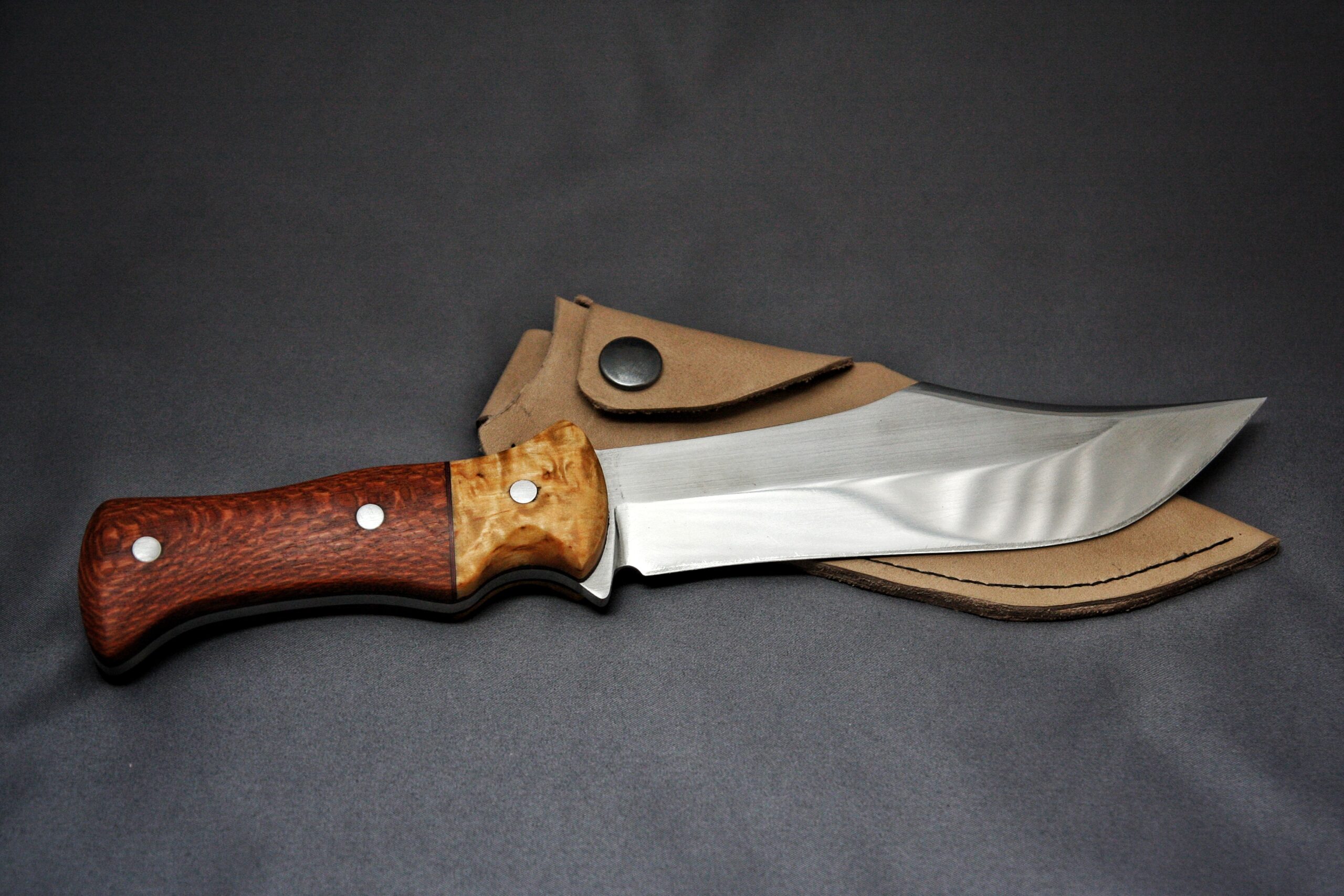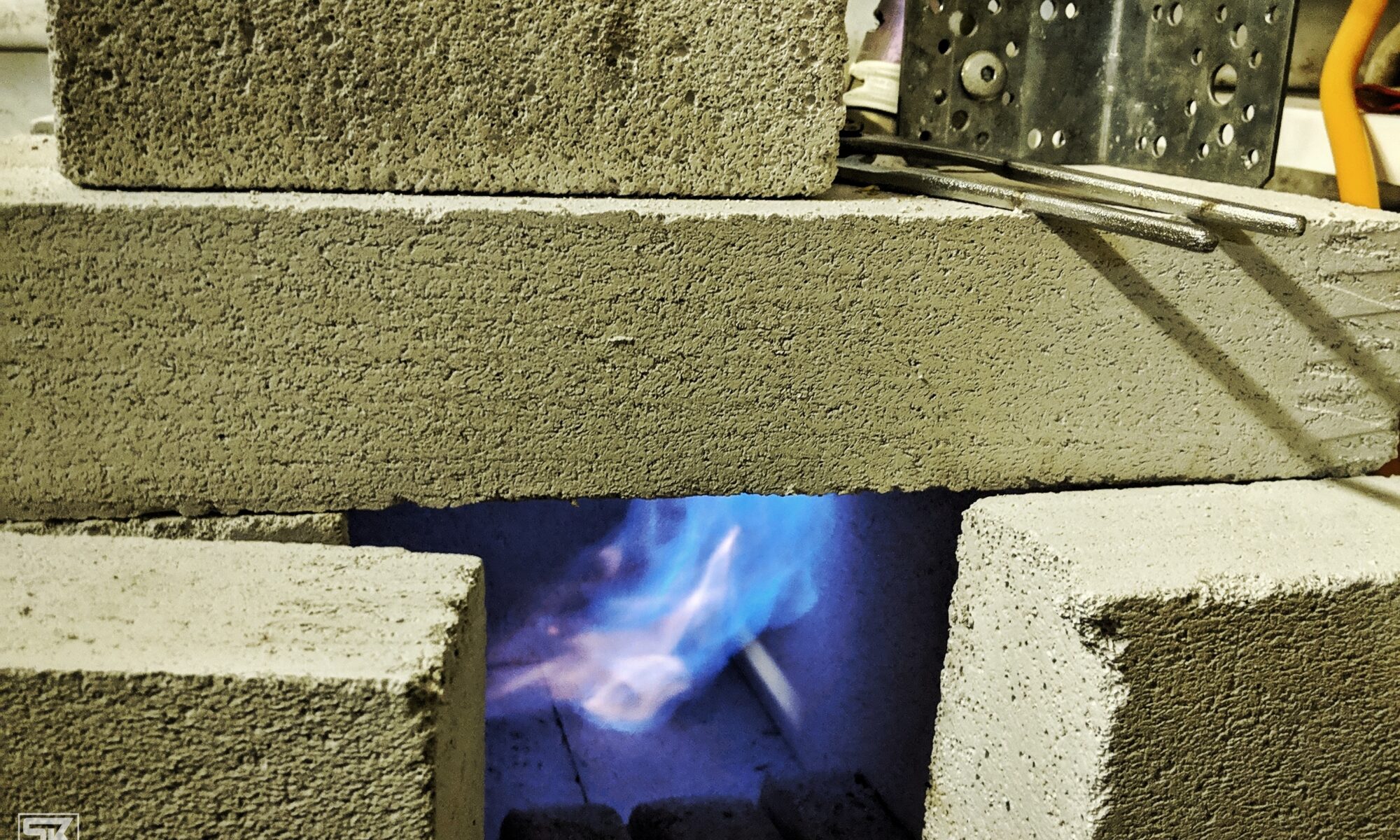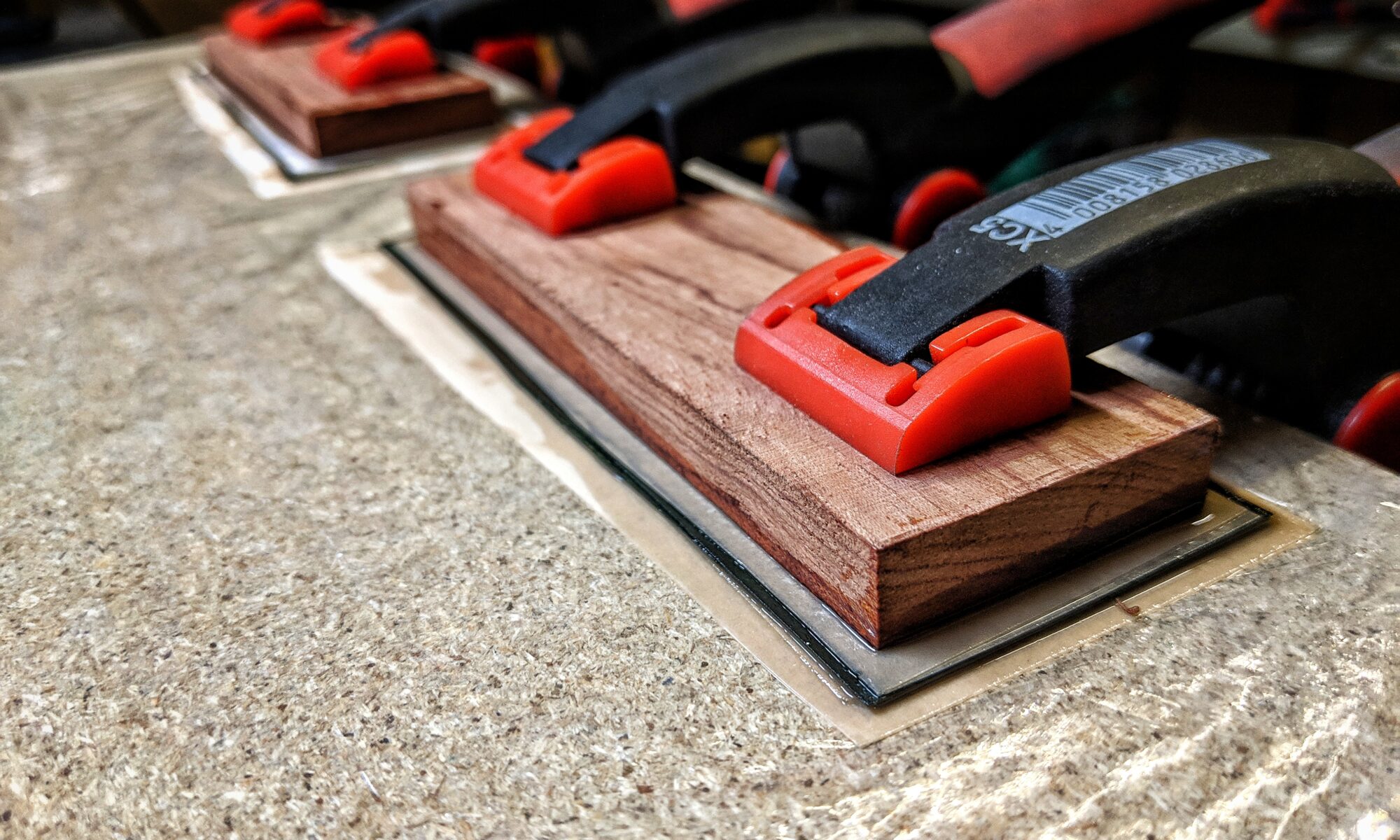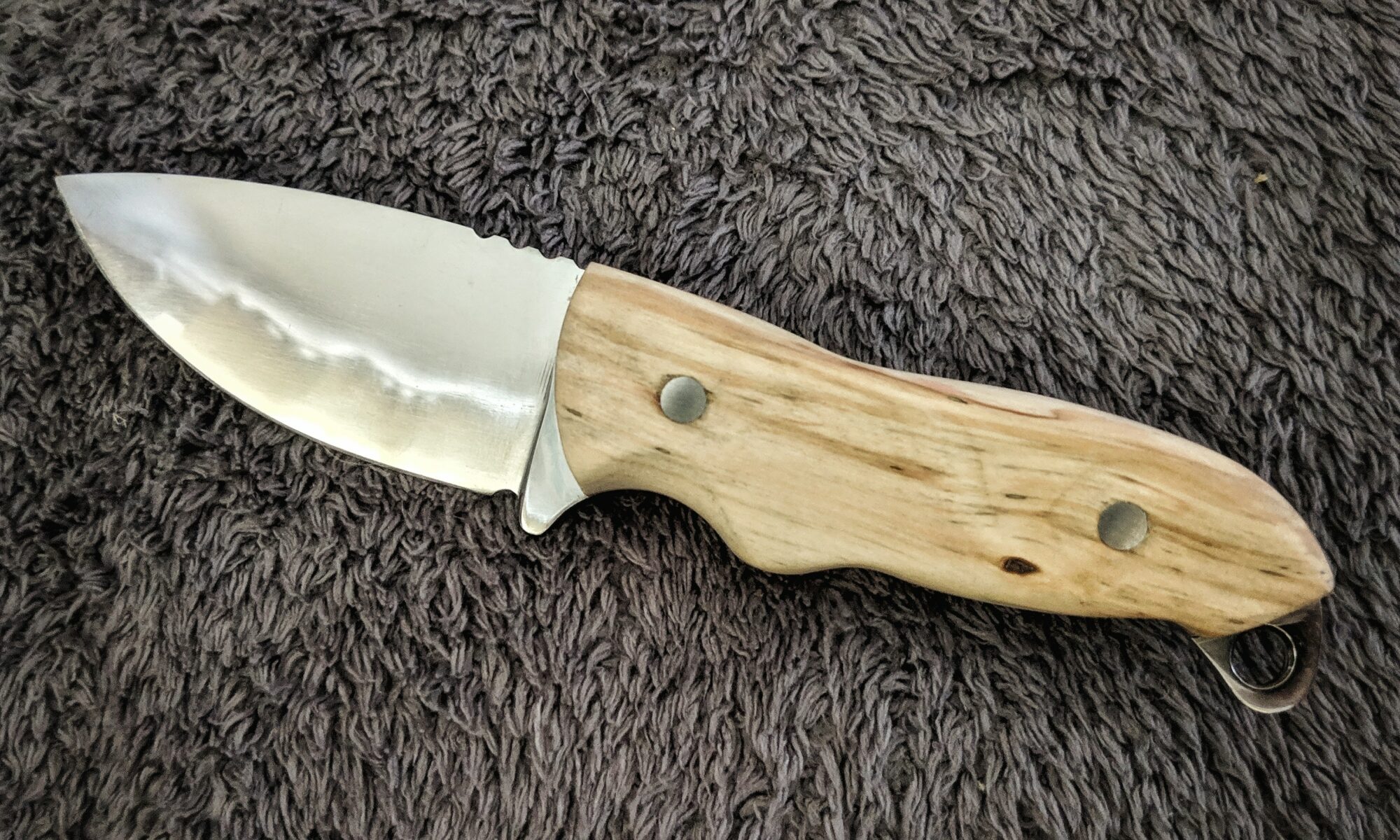The fourth knife I made. I made this knife as a christmas present for my father 2018. The blade is intentionally short and wide. The index finger cutout has a small silver ring running around the opening. The tail of the handle has an extra wide design to give the knife a good handling and has an additional hole for a wrist strap.
Continue reading “Outdoor Knife: PB”Bowie knife: Mike
The third knife I made. I made this knife for my brother as a present for Christmas 2018. The blade is a recurved bowie design. The blade has a flat grind and a mix of polished and scratched surfaces. The recurved design made a special design for the leather sheath necessary.
My blogpost how I made this knife.
Continue reading “Bowie knife: Mike”How I do my metal etching / markings
In this how-to I explain how I use a Brother P-touch P700 and an STe-151 stencil tape for etching my blades.
Continue reading “How I do my metal etching / markings”Kukri / Khukuri: Kukri II
The second knife I made. I was inspired by video games where Kukri knives played a big role. I tried a split handle type with two different wood types. The blade has a konvex grind which is perfect for wood chopping.
my blogpost about making this knife.
Continue reading “Kukri / Khukuri: Kukri II”Fourth knife: A short blade hunting or bushcraft knife
Question: How do you call a knife with this design? It is intended as an universal hunting or bushcraft knife with a short blade. And like my last knife it is intended as a present for christmas 2018.
I had shown my last knife, that I made as a present for my brother, to my father. And man you should have seen his eyes. He loved it and said how much my brother will like it as a christmas present – so what could be better than making another knife for my father, too?
I had seen a short bladed knife design on Instagram that i liked and started designing a similar blade on the computer. This design was pretty hard to do. I wanted to have a short drop point knife with a swadge that grind line seamless blends into one line with the handle. And I wanted to have a curve upward behind the swadge where you could press the thumb against. I needed a lot more iterations than on my last designs before I had a layout I liked.
Finally I was able to transfer the finished form on the 1.2003 steel and cut it out with my angle grinder. I had built myself a file guide out of some scap metal and two M6 screws and tried out to grind the bevels with that attached to the blade. The result were not that good, not because of a crappy file guide but because my belt grinder was not grinding symmetrically on the plate behind the belt. So I ended up with one bevel line that was rounded and one was more rectangular. It took me a while to figure out how to fix this. I put some tape on one side of my flat file so I did not ruin the bevel itself and filed away the rounded part so I ended up with pretty symmetrical bevel lines.
Next came the swadge – man I failed on this one. It took some iterations to get them symmetrical and grind away some other mistakes I made. I don’t know what the problem was because on the previous knives that was one of the easiest tasks.
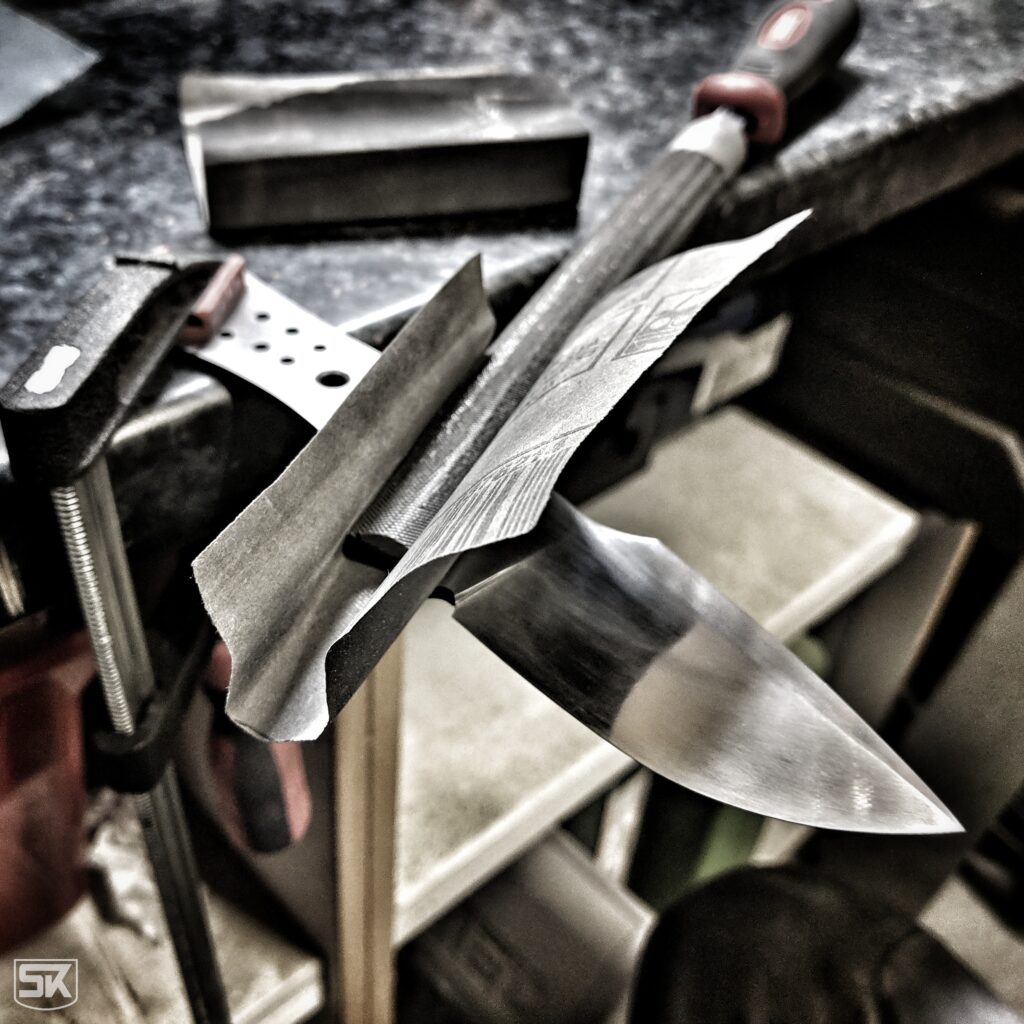
As I like to learn something new with every project I make, I wanted to add something new to this knife, too. Most of my knives so far have a handle with an extra shape for the index finger. This time I wanted to have a longer finger guard and a small silver line from the tang so that it forms kind of an open ring when seen from the side. For this, I had to grind the wood of the handle back down to the steel as I always did and then take the blade out and grind away a bit more of the wood. Then I had to smooth it out because after gluing the handles on the blade I would not be able to do so.
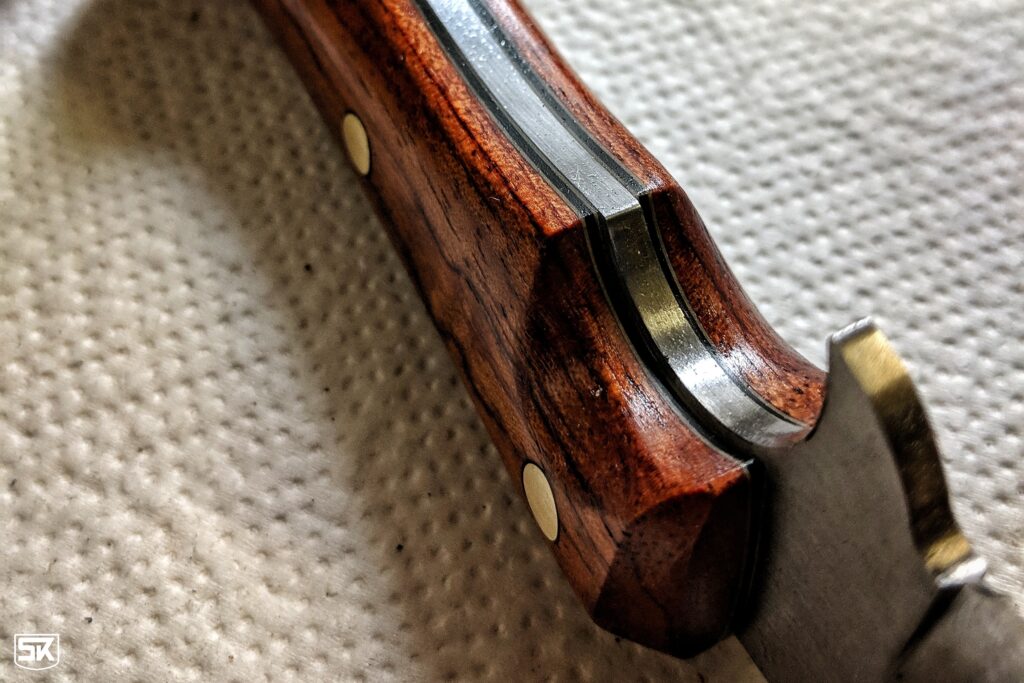
For the paper micarta liners I planned to use white and dark green – and yes I was going to laminate the liner myself, as always. The wood for the handles were bookmatched parts of Bubinga Curly. The wood turned out being pretty hard and grinding took a while. When I finally treated them with linseed oil I was surprised how dark the wood came out. But i liked it.
Next step was making a leather sheath.
Knife three: My first Bowie
I have a very close relationship with my brother – from childhood on we spent a lot of time together. He is one of, if not the most important person in my life. And when he saw the Kukri I made, he asked if I could make a knife for him some day.
We had November and there were still some weeks left so I decided to make a personal knife as a christmas present. He had told me he liked knives “like our father had” and that were Bowie knives. So I designed a nice recurved blade at my computer and again printed out several versions until I had a design that I liked.
I wanted to try a thicker steel and a different quality than the 3.2 mm 1.2003 steel I had used. So I got me some 1.2235 (80 CrV2) also known as L2 steel. The Steel has a thickness of 4.5 mm.
Transferring the form and cutting it out was straight forward. This time I wanted to do a flat grind again to avoid the sharpening problems I had on the konvex grind on the Kukri. And again I did it free hand which always is a big challenge to avoid facetting. But it turned out pretty good when I finally had a flat grind that I could feel while grinding.
The most difficult part was grinding a symmetrical swage and bevels on both sides so the point where the flat part of the blade ends is at exactly the same spot on both sides.
For the Handle I wanted to use the inverse parts I had left from making the handle of the Kukri – so for the front part I had Karelian Birch and the big part of the handle would be made of Leopard wood. Again I planned to make my own Micarta liners. This time I wanted to experiment with single layers of white sheets to create better separation of the colors. I chose black and a brighter red for the colors.
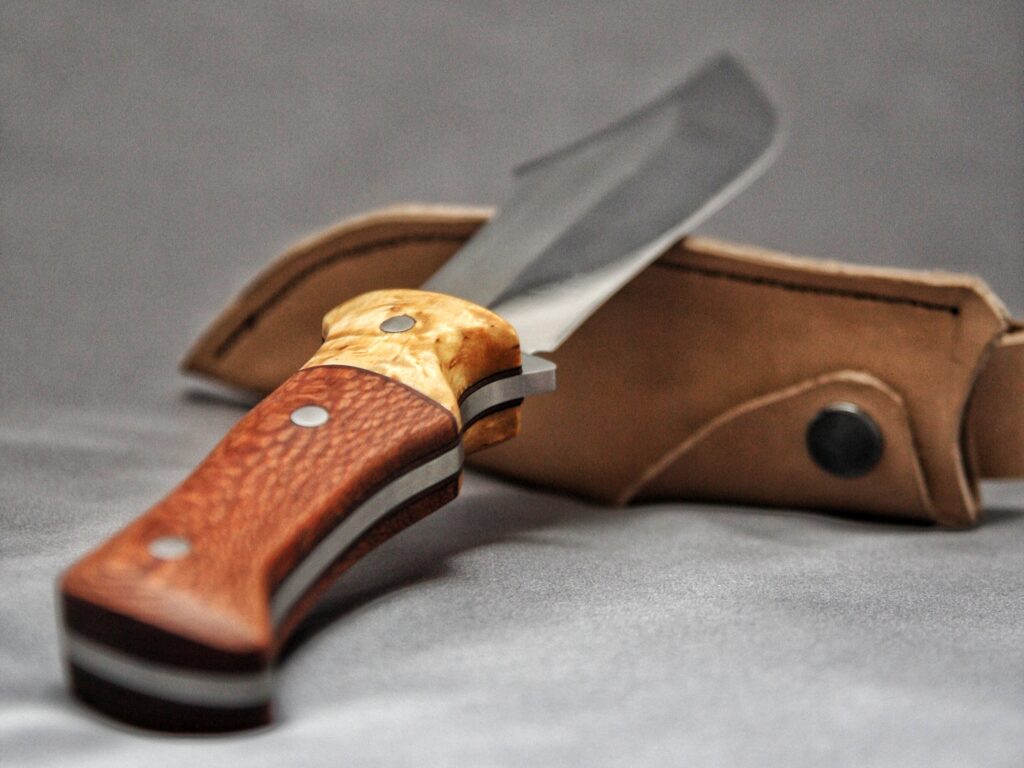
The lesson I learned on this knife was, that I wanted to get a better seamless surface and so I ground the wood of the handle and a bit of the steel between the handle halves. The result was a very wavy steel that was hard to sand back to a smooth curve again.
Another learning was to be extremely careful when mixing polished surfaces with scratch patterns. If you are not carefule enough you can start all over again.
How I built my gas forge
When you work with knife steel there comes the moment you want to harden the steel. There are companies offering it as a service – and as I am living very close to Solingen, which is world famous for its long history of blade industries – there is most certainly a company who could do that for me. But is there anything more beautiful than a piece of red hot glowing steel?
Continue reading “How I built my gas forge”How I make my own paper micarta liners
I bought some vulcanfiber liners and read a lot about how to make my own micarta grip blocks. And as I am always happy to try to build things myself instead of buying everything ready made I wanted to give it a try.
Continue reading “How I make my own paper micarta liners”My second knife, a Kukri/Khukuri
Before I even started to make the handle of my first knife, I began to make a bigger second knife. I am a big fan of a computer game series and I am playing an older title where Kukri or Khukuri Knifes play a big role in the game as one of the main weapons. So why not try and build one my own. I wanted to take a more compact and modern approach.
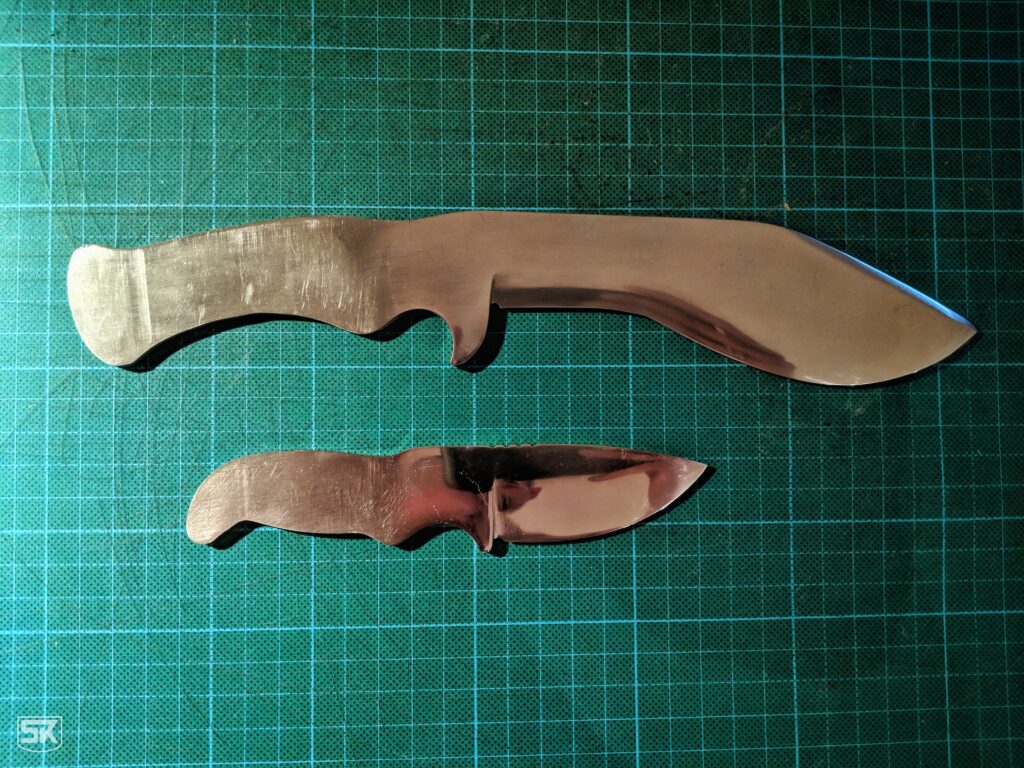
As I work a lot with computers and graphics it was clear I wanted to do the designs using a graphics program. First I thought about using dedicated CAD tools but I decided to go the easy way and chose Inkscape. I did some sketches and printed them out to get a feeling for the real dimensions of blade and handle and the details. It is easy to draw things but then I had to figure out how to do these things with steel. So I ended up doing some design iterations on paper.
I transferred the form onto my 1.2003 Steel and cut it out with my angle grinder. Everything went fine. I even was bold enough to try free hand grinding the bevels, yeah on my second knife with a strongly recurved edge… I did it on the slack part of my grinding belt and I was very happy with how much control I got instead of the flat part of the belt – the result were strongly convex grinded bevels. I hardened in my improvised forge out of porous concrete and a gas torch I fixed to the upper wall. The file did not bite into the steel so I am convinced the steel reached it desired hardness.
One thing I did before hardening was a very intense hand sanding and I put lots of effort into a nice surface finish. I did that again after the hardening and before tempering the steel. So I had to do it again after the steel came out nice and golden after one hour of its 200°C temperings in our kitchen oven. That is a lot of sanding and I am sure that is stupid to do. I keep that in mind for my next knife.
For the handle, I had something special in mind. I had bought some nice woods for the handle halves – Karelian birch and leopard wood. I planned to do a two-part handle and separate the woods with some self-made vulcan fibre and brass plates to get nice golden lines running around the grip.
I put the parts for the handle together with epoxy and let it dry over night. The results looked nice … but … unfortunately I saw that at the brass parts did not stick good enough and broke apart from the wood. So I ripped everything apart and did the handle without the brass. That worked out good after another night of waiting for the epoxy and so the next part was to put the halves on the blade.
I had used my battery powered drill to put the holes for the pins into the blade before the heat treat and I did the same to drill through the wood. And yes I am an idiot: the holes were not nice perpendicular to the blade. As I had not any wood left for the handle I put that learning aside and decided to finish the knife even with this flaws. Before I continued with the handle I sanded and polished the blade to a mirror finish.
I put everything together and let the epoxy dry over the night. So I was ready to grind the grip into shape the next day. That worked out very good and the result felt good in my hands. So next was hand sanding the grip up to 240 grit, watering the wood and hand sanding again after it dried. To protect the wood I now used three layers of boiled linseed oil.
And so close to finishing the knife I learned another big lesson: sharpening a strongly convex beveled blade is very hard to do if you want a nice sharp blade. I just could not get an angle flat enough without taking away some of the bevels. In the end, I was able to do the paper cutting test – but lesson learned.
First Knife: Signature
The first knife I made. The form was drawn freehand on a piece of aluminum as a test and later transferred to real steel. I liked the form so much I even transferred it backwards to my computer where I now draw all of my blades. This is why I call this knife Signature.
My blogpost about making this knife.
Continue reading “First Knife: Signature”